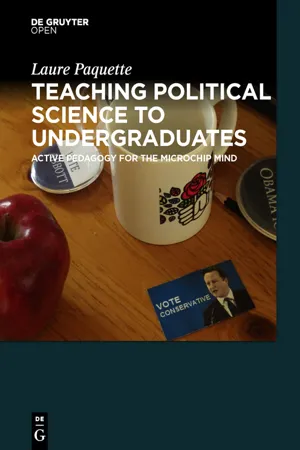![]()
Part I: Case studies
![]()
Excursus: Overview and Instructions for Worksheets
The worksheet system makes a number of requirements of the instructor and the student. First, the instructor must understand and be able to articulate the structure of the analytical framework and be able to break it down into a step-by-step process. The instructor must also be able to increase or decrease the level of his or her own abstract thinking, and to do so transparently before the class. The instructor should also fill out the worksheet during the time of the class. If the worksheets are being used in more than one application, the instructor must be able to adapt them to these applications as necessary. The worksheets must be varied and they also must be varied in level of difficulty and complexity. Finally, students must have the capacity and the willingness to ask questions before the group. They must also not be convinced that they already know everything they need to know.
There are also structural requirements for the classroom. First, the learning that is expected of students must be structured, and the worksheet system must reflect that structure. There must be successive levels of learning, and successive levels of awareness of that learning. This means that students may start with information provided, but that must be followed with an immediate application, then the context of the learning can be broader, and so is the application. Ultimately, there must be an awareness of learning about learning, or a reflection of learning as a reflection on one’s practice.
The worksheets are:
- Strategy
- Key Actors
- An Actor’s Actions or Tactics
- Key Resources
- Key Rules
- Factors Outside Your Control
- Do-or-Die Moments
- Tactics and Counter Tactics
Blank worksheets can be found in the Appendix.
In Worksheet 1 the student is expected to identify the components of a strategy used by an actor to meet a particular challenge. As with the integration diary, the student should use point form and use no more than a single page. This will require students to be specific, and to choose among competing priorities. It also makes it possible to assess the judgment of the student as well as his or her capacity to think.
The components of strategy are: the problem, to be described succinctly in the top box, ‘Issue’; the solution to that problem that suits the student best, again to be described succinctly in the middle box, ‘Goal’; and the steps that will have the student reach the goal, or the method s/he plans to use, of the collection of actions s/he plans to use, in the bottom box, ‘Tactics’. As usual, the student must be detailed, specific, succinct, and must stay at one level of generality or detail throughout the worksheet.
Worksheet 1: Strategy
| Issue/Problem |
| Goal |
| Core Idea |
| Tactics (actions or headings) | 1 |
| | 2 |
| | 3 |
| | 4 |
In any strategy, there are a number of possible actors. Those actors can be individuals, groups, governments or even groups of governments. The actors can be involved in the planning of a strategy or its application. They may be helpful to strategy, neutral, or opposed to it. The actors may be conscious of a strategy or actions, or they may not. But most importantly, they may have an impact either on the tactics or the strategy being analysed, or designing or carrying out. The goal of Worksheet 2 is to identify which ones may have an impact. It then becomes possible to set the others aside and focus energies on the actors who matter, or identify weak points.
Worksheet 2: Key Actors
All Actors |
Can this actor affect achieving the goal? (Yes/No) |
| |
| |
Column 1: Give a comprehensive list of actors in the first column. The actors may be listed under various headings, such as civilian, military, domestic, foreign, etc. There is no reason to be concerned about putting people or groups in the correct categories. What matters is that every individual and/or group possible is listed. Ask whether the groups listed ought to be broken down further into smaller groups – for example, should a foreign national government be listed as such, or should it be broken down into ministry of the interior, ministry of defence, legislators, executive council or cabinet, local government, etc. If they can, then do so. Once the comprehensive list of actors is established, the next column helps differentiate between significant and insignificant actors. This differentiation will be repeated throughout the process.
Column 2: An actor can affect whether or not the tactic required ca...
